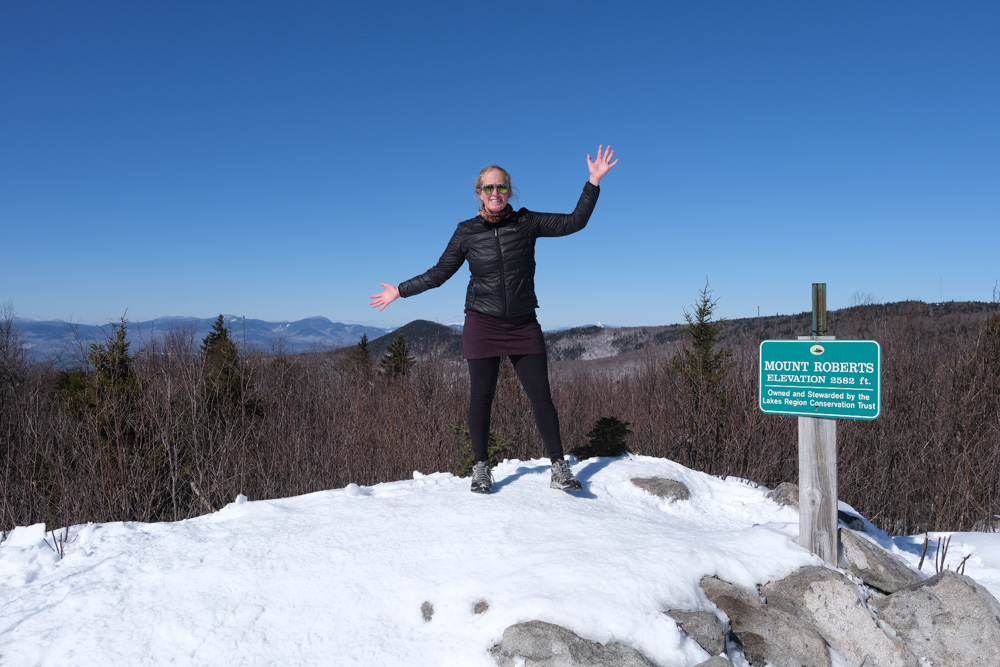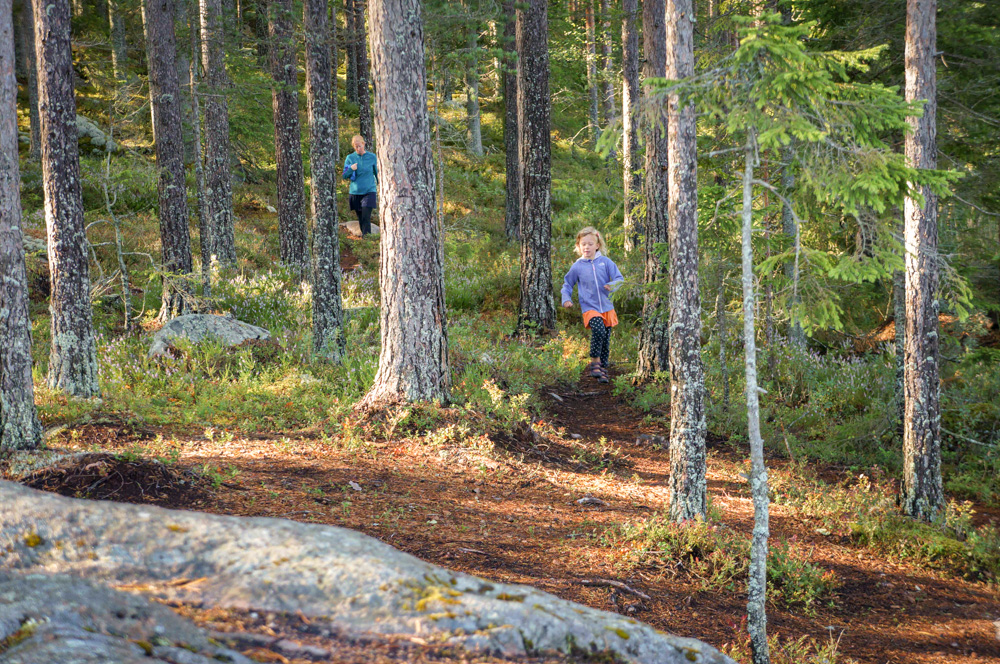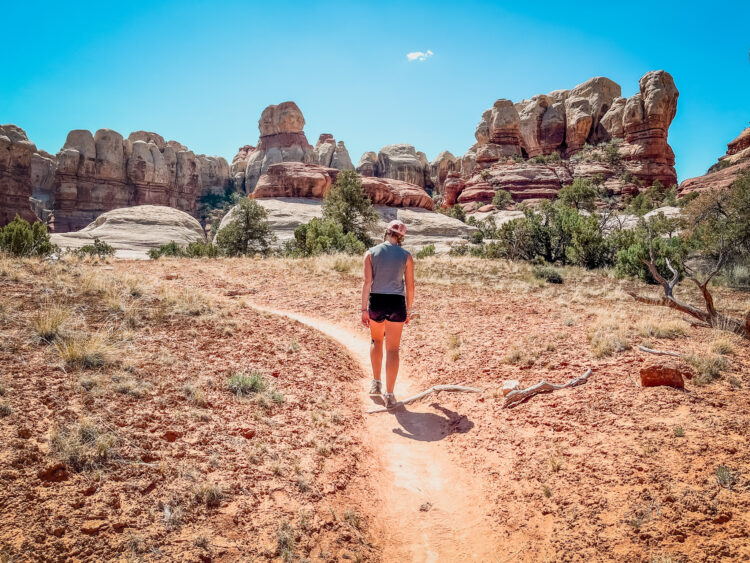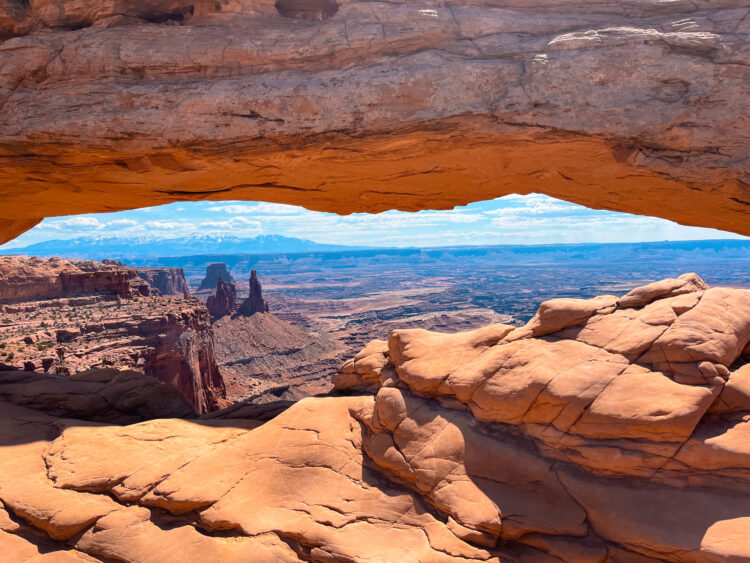Are you excited to get outside and try hiking? Perhaps you are wondering where to start, what to wear, and where to go. Hiking is one of the easiest ways to get outside and explore and this complete guide to hiking for beginners will give you everything you need to know to get started on your own hiking adventures.
There are amazing hikes across the United States and the world just waiting to be discovered. By the end of this Guide to Hiking for Beginners, you will be on your way to exploring new places.
As an Amazon Affiliate, I earn from qualifying purchases
Why Hiking is one of the Best Things you Can Do
Before we jump into the details of how to start hiking and what you need to bring, it’s worth considering why hiking is such a great activity. If you are already looking for hiking tips for beginners you may already know that you want to hike, but if you’re at all on the fence, check out the benefits below.
- Hiking gives you access to amazing views, sites, and places you simply can’t explore by car
- Hiking is excellent exercise
- Hiking is a great way to connect and talk with friends and family
- Hiking can be a challenge and often provides a sense of accomplishment
- Hiking is a great way to escape the pressures of everyday life
- Hiking is a relatively cheap activity that is easy to do the first time
- When you take proper safety precautions, hiking is safe and fun

What Exactly is Hiking?
Hiking vs Walking
Once you know all the benefits of hiking, the next step in a beginner’s guide to hiking is to explain exactly what hiking is and how it’s different than walking. The first thing to know is there is not much difference between hiking and walking. Walking is often done on a sidewalk or other human-made surface while hiking is usually on a natural path or trail. That said, I’ve done hikes on paved surfaces and taken walks that are on natural paths.
Most hiking trails have some element of nature. This might mean a city park or a national park. A walk can include nature as well, but can also be simply walking the sidewalk of different streets in your town. Many hikes also have a change of elevation while walks tend to be flatter.
Types of Hiking
Day Hikes: The most common type of hiking (and the best way to start hiking if you are a beginner). Day hikes are simply done on the same day. You wake up, you go for a hike, and you go home at the end of the day.
Backpacking: Backpacking refers to carrying your camping gear with you on a hike and spending the night out in the woods. You can also backpack to a hut or other place to sleep and continue hiking the next day. You can do a 2-day backpacking trip or a month-long backpacking trip.
See more about the difference between hiking and backpacking.
Thru-Hiking: This refers to hikes that do an entire trail from one end to the other. Examples of thru-hikes include the Appalachian Trail and The Pacific Crest Trail.
If you are new to hiking, you will want to start with an easy day hike and build up from there as you build your hiking skills, confidence, and ability.

How to Find the Perfect Beginner Hike
If you are looking for beginning hiking tips, chances are you either already have something planned that involves hiking (like you are visiting a national park) or you are hoping to get into the sport for the first time and don’t know where to start. Either way, the best thing to do to start hiking is to begin with an easy hike close to your home. You don’t need to go out and climb to the top of a huge mountain for your first hike. Simply look at places near your home and find something short and easy.
The best hiking trails for beginners will be well maintained and marked, and mostly flat. This will give you a sense of what you can do, so on your next hike, you can give yourself a bit more challenge. If you are already an avid walker and in good shape, then you can choose a well-marked trail that has more elevation gain.
The best way to find hiking trails near you is to do a quick search. My favorite program to use is Alltrails. You can use this app to search for nearby hikes using their map feature. You can also read a trail description as well as reviews. Usually, the most recent reviews will describe the trail conditions such as mud on the trail, bugs, a closed trail, etc.
Another option for finding the best hiking trails for beginners is to look at local parks and nature trails close to your home. Consider a short trail in a place you are familiar with. There are a few things to remember when you are choosing a trail:
- Hiking distances are usually given in round trip (but not always). Trails are either loops or out and backs so read the description or look at the map to make sure you know where you’re going
- You may be able to walk a mile in 25 minutes, but hiking takes longer. When you are just starting, give yourself 1 hour/mile on a flat trail.
- Elevation is very important when you are choosing a trail. You will usually see elevation gain measured in feet or meters. A good rule of thumb to use is that 1,000 ft of elevation gain will add an hour to your hike.
- For your first hike, try to select something with under 500 feet of elevation. This will give you a sense of how you do with elevation gain. Also note that if the hike is only 1.5 miles round trip with 500 feet of elevation – this will still be a pretty steep hike.
Need some inspiration? See more articles about amazing hikes.
For complete details on finding the Best Hikes, check out:
9 Best Ways to Find Hiking Trails Near Me

Beginner Hiking Skills
Once you have a trail selected, there are a few other things to know about hiking. Many of these skills are things you can build on over time, so don’t get overwhelmed. The basics of hiking are very simple – choose an easy hike to start, dress for the weather and go for a hike, but the list of things below will help you enjoy your hike and keep you safe.
- Check the weather before you go hiking and remember that the weather might be different where you are hiking. It’s usually better to hike in the morning as afternoons can have thunderstorms or heat in the summer and you will have more daylight if something doesn’t go quite right.
- Dress for the weather and bring plenty of food and water for your hike
- Let someone know where you are going and when you plan to return. At the very least, leave a note at home, or let a friend of family member know.
- Many hikes are well marked and you won’t need advanced navigation skills to follow the trail. You should always have a trail map with you (and don’t assume you will have cell service). Download a map, take a photo of the trail map at the start of the trail, or bring a paper map. Many trails use painted marks on trees (blazes) to help you follow the path.
- Don’t be afraid to turn around if you are too tired, cold or don’t feel comfortable with the situation
What to Wear Hiking
What you wear hiking depends on the time of year and the place you will be hiking. In general, you should wear clothes that are comfortable and quick drying. You do not need to go out and buy a lot of expensive hiking gear (read more below about how to hike on a budget) and remember that this list is something you can build up to overtime.
- Footwear: the best hiking shoes for beginners will give you support, be comfortable and broken in. For some hikes you are simply wear sneakers or running shoes, while other hikes you may want more ankle support. Do not go out and buy a new pair of hiking boots and take them on your first big hike. Try some shorter hikes and make sure to break in new shoes. See my suggestions for the best hiking shoes under $100.
- Choose clothes that are NOT cotton and are quick drying. You will want to dress in layers. In the summer we usually like to hike in a quick dry t-shirt and shorts and bring layers for the top and bottom.
- Rain gear – a rain gear that can double as a wind breaker is always a good idea, even when rain isn’t in the forecast. We also pack rainpants/windpants on longer hikes or during the cold months
- Hat, sunglasses, (gloves if it will be cold)
- Socks – good hiking socks make a big difference for comfort, especially if you get your feet wet on the hike.

Hiking Gear List for Beginners
The best hiking gear for beginners is typically the same as anyone else hiking. Here is a list of the essential hiking equipment for beginners:
- Backpack – you can buy plenty of expensive backpacks, but try to find something lightweight that will fit everything you need. I often see people hiking and carrying a bag. You want to keep your hands free when you hike. Another option for short hikes is a fanny pack.
- Water – figure on about 1/2 liter of water/hour or more (especially if you have a lot of elevation) – always carry more water than you think you will need.
- Food – pack plenty of food. Firgure on at least 200 calories/hour
- Map – have some way to navigate on the trail. A compass is also useful if you know how to use it and the trail isn’t well marked
- Headlamp – or some other means of lighting up the trail if it will be getting dark at any point near your hiking time
- First Aid Kit – you should always have a small kit even for short hikes that at the minimum includes bandaids and other essentials. You can purchase hiking first aid kits or make your own
- Optional: small knife, water purification, bug spray and sunscreen
- Cell Phone – bring your phone to take photos, but don’t count on getting cell coverage.
See a list of exactly what to pack when day hiking.
Hiking for Beginners on a Budget: Do you Really Need All That Gear? (are hiking boots necessary)
Most beginner hiking guides have a long list of all the things you need to start hiking – but do you really need all those things to go hiking. The quick answer is no.
Will some of those things make hiking safer and more comfortable? Yes.
If you want to hike, and don’t want to pay money upfront for the gear until you know it’s something you want to do, look at the clothes and footwear you already own. Try to find something you can wear that is comfortable and try to avoid things with cotton (jeans tend to be unpleasant, especially when they get wet).
Next, try to find some footwear that is comfortable. The best hiking boots for beginners for your first hike might simply be your running shoes. Just make sure you choose a trail that is well maintained without lots of roots and rocks.
If you go hiking and decide this is something you want to keep doing, you can slowly invest in better and better gear.
The right gear is important, but don’t let expensive gear keep you from getting out on the trail.

What is Leave No Trace
In addition to bringing the right gear and choosing the right trail, it’s important to act responsibly on the trail so other people can continue to enjoy these amazing places. Leave no trace principles mean that you leave the place you visit in the same or better condition than you found it. Here are a few quick and practical guides to following leave no trace:
- Keep your hiking group small and follow posted trail and park rules
- Travel, stop and camp in hard packed areas. This means you should always stay on the trail
- Pack it in and pack it out – this includes things like apple cores and other food scraps
- Don’t take home things that you find on the trail (rocks, flowers, etc)
- Avoid fires – many places have strict fire regulations – always follow these rules
- Respect wildlife – this means not approaching animals, feeding animals and keeping dog on a leash.
- Be considerate to other trail users. This means keeping music and loud noise down.
Beginner Hiking Guide to Staying Safe on the Trail
This hiking guide for beginners has already mentioned a few ways to stay safe on the trail, but even short hikes can have a rolled ankle of an animal encounter. The information below will help keep you and other safe.
Animal encounters – animals encounters are rare, but can be unnerving. Most animals want nothing to do with you, so you should not approach them and move slowly away. Do not feed the animals so they don’t learn that people are associated with food. There are several animals that can be dangerous to people, but mostly when they are surprised (these include bears, moose, snakes, and cats). Know what animals you are likely to encounter where you are hiking. In some areas you should carry bear spray.
Injuries – Injuries are a part of life and hiking. Most injuries will be blisters, bug bites, scratches, and bruises that can be treated with a small first aid kit. For bigger injuries such as a rolled ankle, you may need to call for help or assist someone in getting out.
Bugs – bugs can be a pain to deal with when you are hiking. You can bring a good bug spray with you or dress in layers to keep bugs off. Avoiding areas or times of the year where there are lots of bugs is also recommended. Here in the northeast where we live, ticks can be a big problem – we always finish our hikes the a tick check to make sure we don’t have any on us.
Communication – always let someone know your intended hiking location and timing so if you don’t come back they can send out help. This is important especially if you are hiking alone. It’s also a good idea to leave a note with your itinerary in the car.
Personal Items – unfortunately hiking parking lots occasionally have cars broken into. Always place your valuables out of sight in the car.

Hiking with Other People
As a family of 5, we love to hike as a family. Hiking with kids is a great way to enjoy the day and get everyone outside for some exercise. Read more about hiking with older kids.
We also love to hike with friends. If you are a beginner hiker and are looking to find people to hike with, you can start with looking locally for a hiking group. Often you nearby outdoor gear store or even library will know where you can find people.
Don’t be afraid to hike by yourself as well. Many people find this is their favorite way to hike.
Final Tips for the Beginner Hiker
If you’ve made it to the end of this hiking guide for beginners, you have all the tools you need to get out there on the trail. You are well on your way to the amazing experience of hiking and exploring the great outdoors! Check out these final beginner hiking tips.
- Don’t get overwelmed – start small and get out there and hike
- Start with an easy trail to a beautiful place
- National Parks often have excellent beginner trails with spectacular views
- Be considerate of others on the trail and always practice leave no trace








Pingback:15 Day Hike Essentials: Exactly What to Pack for Day Hiking - Chasing ADVNTR
Pingback:9 Best Ways to Find Hiking Trails Near Me - Chasing ADVNTR
– Я не получаю то, что хочу.
– Не хватает мотивации на регулярные
занятия.
– Мои цели сбываются у других
людей.
Почему так, узнай у опсуимолога!
Вбивай в поиск: “опсуимолог” и получи актуальные контакты.
Ты же знаешь кто такой опсуимолог?